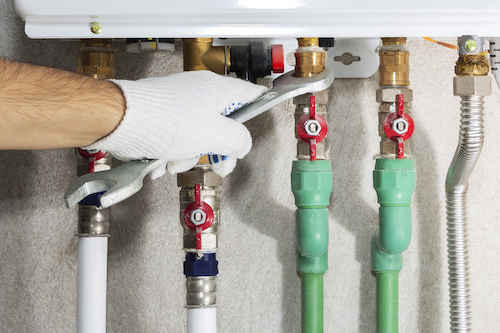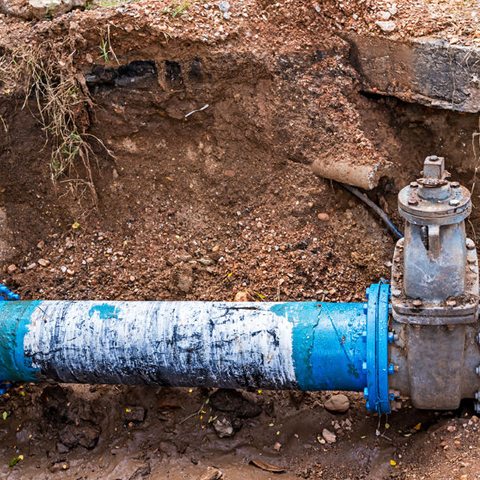Stop the Flood: Techniques for Spotting and also Taking Care Of Burst Pipes
Stop the Flood: Techniques for Spotting and also Taking Care Of Burst Pipes
Blog Article
Here below you can get a lot of quality material with regards to How to Prepare for Your Dishwasher Installation.

A burst pipe is a major emergency; you can just stand as you see water you pay very much to reunite with the planet. In even worse situations, you discover a pool on your kitchen floor, which is a great journey threat, particularly if you have children around. If the pipe that burst remained in your wall surfaces, problem: you may require to repaint that whole section.
How can a catastrophe like a burst pipeline be stopped as well as taken care of? Well, by paying attention to your professional emergency plumbing professionals and adhering to these policies.
How do I recognize when my pipes have ruptured?
Changing water pressures
Pipelines do not just burst in a day. You might have discovered that your cooking area tap or shower does not run immediately when you transform the faucet. It might stop briefly for a couple of seconds and afterwards blast you with more pressure than typical.
In various other instances, the water might seem regular initially, then decrease in pressure after a couple of seconds.
Wet wall surfaces and water spots
Prior to a pipe ruptureds, it will leakage, most times. If this consistent dripping goes unnoticed, the leakage may finish right into a broad tear in your pipeline. One easy method to prevent this emergency is to look out for wet wall surfaces advertisement water discolorations. These water stains will lead you right to the leakage.
Puddles under pipelines and sinks
When a pipeline ruptureds, the discharge creates a pool. It might appear that the puddle is growing in size, and no matter the amount of times you wipe the pool, in a few minutes, there's one more one waiting to be cleaned up. Typically, you may not be able to trace the puddle to any visible pipes. This is a sign to call a professional plumber.
Untraceable trickling sounds
Pipeline bursts can happen in the most unpleasant locations, like within concrete, inside wall surfaces, or under sinks. When your home goes quiet, you might have the ability to listen to an aggravatingly consistent trickling sound. Even after you've inspected your shower head as well as cooking area faucet, the dripping may continue.
Precious visitor, the trickling might be coming from a pipe inside your wall surfaces. There isn't much you can do about that, other than inform a professional plumber.
Shut down the Water
When water freezes, it broadens in quantity by about 9 percent. As well as it broadens with tremendous pressure: The stress inside pipes might go from 40 pounds per square inch to 40,000 psi! No pipeline can hold that much pressure, so it bursts. The break may happen where the ice forms, however regularly, it occurs where water stress discovers a vulnerable point in the pipe. That might be inches and even feet from the frozen location. Discover the water shutoff valve and switch off the water to avoid more damage. You might also require to shut down the electrical energy also, depending on where the leakages takes place as well as exactly how big it is.
Infected water
Many individuals assume a ruptured pipeline is a one-way electrical outlet. Rather the contrary. As water drains of the hole or laceration in your plumbing system, pollutants find their way in.
Your water might be infected from the resource, so if you can, check if your water storage tank has any type of issues. Nevertheless, if your drinking water is supplied and purified by the local government, you need to call your plumber quickly if you see or scent anything amusing in your water.
What do I do when I identify a burst pipe?
Your water meter will continue to run even while your water wastes. To lessen your losses, discover the primary controls and also transform the supply off. The water pipe are an above-ground framework beside your building.
How to Fix & Detect a Leaking Pipe
How Do I Know if a Pipe is Leaking?
Leak detection tests can help you determine if your pipe has a leak. Even if you don’t see an apparent leak, you should still conduct leak detection tests regularly to save water and money—and prevent major damage to your home.
Water meter. It can be helpful to figure out what your usual water meter usage numbers are and then monitor them regularly. To monitor your meter, first, turn off all water faucets in your home. Check the meter and write down the numbers. In a few hours, check the meter again. If the numbers have changed, you have a leak. Water gauge. Use a water gauge to test your water pressure. Your showerhead should produce a certain amount of water pressure based on its model and design. If the pressure is lower than it is supposed to be for that specific showerhead, your home likely has a leak. Puddles. Look inside your bathroom, laundry, and kitchen sink cabinets. Puddles around the cabinets or around toilets, tubs, showers, and washing machines indicate the presence of a leaking pipe. You may also notice loose tiles, peeling or flaking paint, or mold caused by water accumulation. Napkin test. Even if you don’t see any puddles, you may still have a leak. You can test for water leaks in the bathroom, laundry, and kitchen by wiping below-sink connections with a napkin, paper towel, or piece of toilet paper. If it becomes damp, you probably have a leaking pipe under the sink. Discolored walls. Walls that are discolored—usually with brown or yellow stains—or bulging might mean that they have been impacted by water damage caused by a leaking pipe. Smell. A leaky pipe will create sitting water, and over time, that water may develop a musty smell. If your home smells musty, but you can’t locate the source, it may be due to a leak. Steps for Fixing a Leaking Pipe
A leaky drain can be remedied by tightening the pipe base, replacing the drain seal, caulking the rim, and tightening the pipe nut. Similarly, a leaking toilet pipe can be treated by tightening the packing nut. You may also need to replace the valve. A leaky faucet may just need tightening or replacement of the washers. If that doesn’t work, consider replacing your faucet. If your pipe has a hole in it, you may want to use a pipe leak sealer or pipe leak tape. This quick fix for water pipe leaks can also temporarily fix a copper pipe leak. https://www.ahs.com/home-matters/quick-tips/how-to-tell-if-pipes-are-leaking/

I was shown that report about What to Know Before Installing a Dishwasher from a good friend on another web address. If you please take a moment to promote this content if you enjoyed reading it. Thank-you for taking the time to read it.
Click For More Info
Report this page